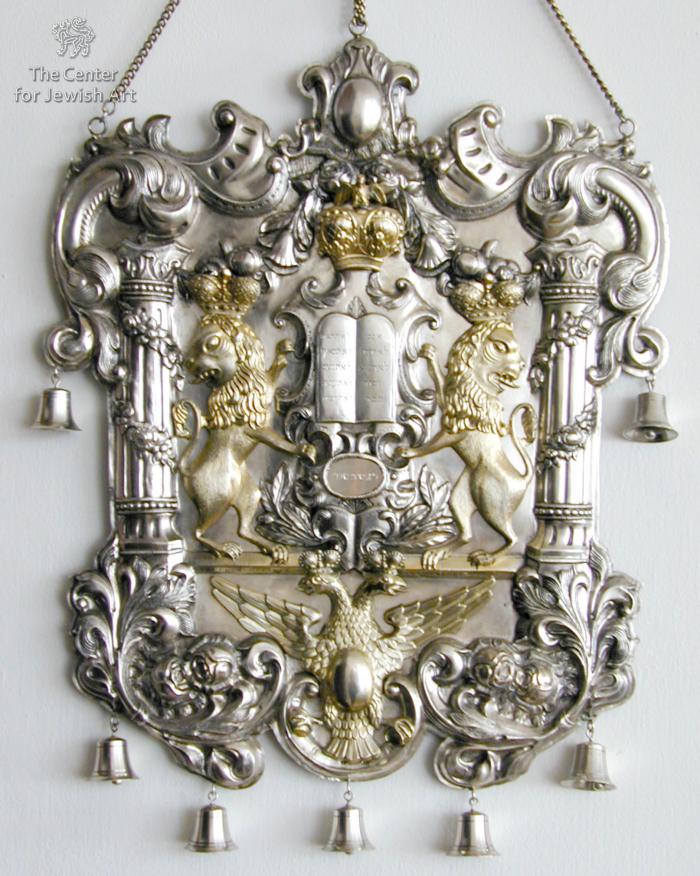Obj. ID: 37203 Torah shield, Moldavia, circa 1870

sub-set tree:
O | Ornamentation: | Foliate and floral ornaments | Floral motif
C | Crown
E | Eagle | Eagle, double-headed displayed
B | Bell
C | Columns
C | Curtain
H | Heraldic composition | Central element | Tablets of the Law (central element of heraldic composition)
|
The following description was prepared by William Gross:
Breastplates – ornamental metal plates or shields hung in front of the Torah scroll – are found in all Ashkenazi communities, as well as Italy and Turkey, but designed differently in each community. In most cases the breastplate is made of silver or silver-plated metal. In Italy the breastplate is shaped like a half-coronet and known as the Chatzi-keter, "half-crown." In Turkey, the breastplate is called a Tas, and assumes a variety of shapes – circular, triangular, oval, or even the Star of David. In Western, Central, and Eastern Europe the breastplate is called either Tas or Tziz; its function there is not merely ornamental: it designates which Torah scroll is to be used for the Torah reading on any particular occasion, with interchangeable plaques.
The most notable early breastplates, from 17th-century Germany and Holland, were either square or rectangular, but over time they became rounded and decorative, and bells or small dedicatory plaques were suspended from its lower edge. During this period, the design of breastplates was influenced by that of the Torah Ark and the parokhet (curtain) concealing it, featuring various architectural motifs, the menorah (the seven-branched candelabrum), Moses and Aaron, lions, or Torah crowns.
Torah shields are used primarily in the areas of the Jews of Ashkenaz. This finely crafted, ornate tas has no silver mark to identify its place of origin. However another almost identical, although smaller, shield, brought to me several years after this Tas entered the collection, has an inscription from Iasi, Rumania, from 1871. This example was most likely made by the same silversmith in that place. The hints of Biedermeier style, particularly the decorative motif of roses, suggest the strong influence of the Austro-Hungarian empire, entirely consistent with the geographical origin of the Tas. The double-headed eagle so prominently displayed at the bottom of the shield is the symbol of that empire as well as representing a messianic symbol on Jewish objects. The opening for the portion plaques is oval, itself an unusual feature.
Inscription: Abbreviations for the Ten Commandments on the Tablets of the Law









